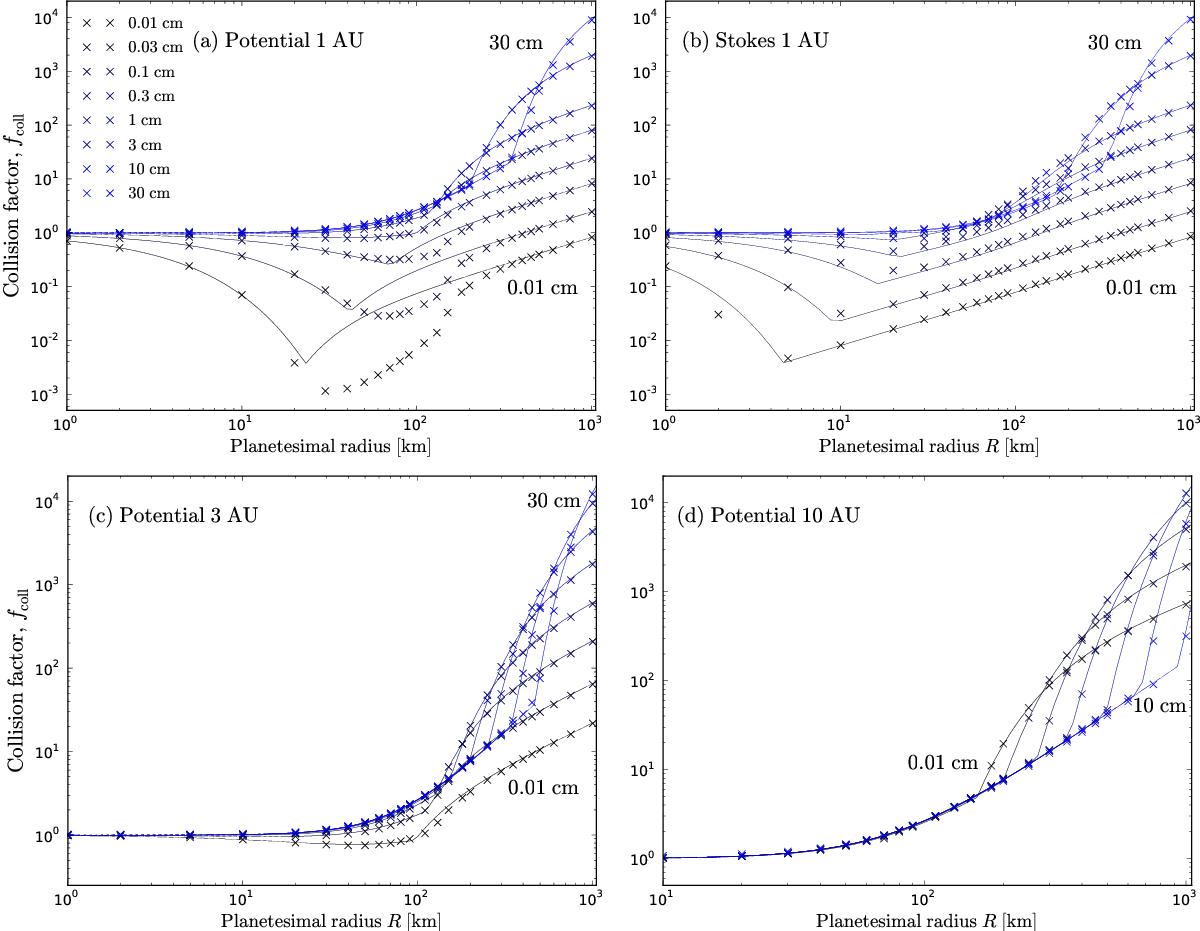Fig. 3

Collision factor fcoll as a function of planetesimal radius R for a constant internal density ρ• = 1 g cm-3. Crosses indicate numerical data, while solid lines are fits. The color scale ranges from dark to light blue for increasing particle radius. a) Results obtained with the (inviscid) potential solution (Eq. (7)) at 1 AU orbital distance from the star. For a small planetesimal size, the collision factor is approximately geometrical (fcoll ≈ 1). However, for small pebble sizes, aerodynamic deflection results in a significant drop of fcoll (see Table 1 for the minimum collision efficiency, fcoll,min). b) Results with the (highly viscid) Stokes flow solution (Eq. (8)). Settling occurs at smaller sizes due to the increase in encounter time. c) Results at 3 AU orbital distance show a shallow barrier only for the lowest particle size. d) At 10 AU a barrier is no longer present because of the reduced gas density.
Current usage metrics show cumulative count of Article Views (full-text article views including HTML views, PDF and ePub downloads, according to the available data) and Abstracts Views on Vision4Press platform.
Data correspond to usage on the plateform after 2015. The current usage metrics is available 48-96 hours after online publication and is updated daily on week days.
Initial download of the metrics may take a while.






